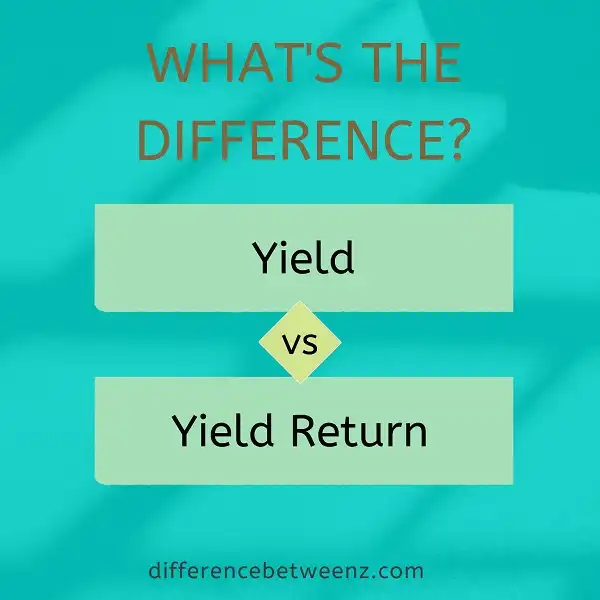When it comes to investments, there are two important terms you need to be familiar with: yield and return. Yield is the annual income generated from an investment, while the return is the gain or loss of the principal invested. In order to make the most informed decisions about your money, it’s important to understand the difference between these two concepts.
For example, let’s say you have a $1,000 investment that yields 5%. This means you will earn $50 in income from this investment each year. However, if the investment’s value drops by $100, your return would be negative at 10%. It’s crucial to understand both yields and returns when making financial decisions so you can choose investments that are right for you.
What is Yield?
Yield is a measure of how much income an investment generates. Yield can be expressed as a percentage of the current price, as a percentage of the original purchase price, or as an annual rate. Yield is often used to compare different investments. For example, if one investment has a yield of 5% and another has a yield of 10%, the second investment is said to have a higher yield.
Yield is also affected by changes in the underlying price of the security. For example, if a stock that originally cost $100 per share increases in price to $110 per share, the yield will fall even if the dividend remains unchanged. Yield is an important consideration for investors, but it should not be the only factor considered when making investment decisions.
What is Yield Return?
Yield return is a measure of the return on investment in terms of the percentage of the original investment that is returned to the investor as income. Yield return is most commonly associated with bonds, but it can also be applied to other types of investments, such as stocks and real estate. Yield return is calculated by dividing the annual income from the investment by the original investment amount.
For example, if an investor purchased a bond for $1,000 that yielded $50 in interest over the course of a year, the yield return would be 5%. Yield return is usually expressed as a yearly rate, but it can also be reported on a monthly or quarterly basis. Yield return is an important metric for investors to consider when evaluating potential investments.
Difference between Yield and Return
Yield and return are terms that are often used interchangeably, but they actually have quite different meanings. Yield refers to the amount of income that an investment generates, while return includes both the income and the capital gains or losses on the investment. For example, if you purchase a stock for $100 and it pays a dividend of $5 per year, the yield is 5%. However, if the stock price increases to $105, the return is 5%. If the stock price decreases to $95, the return is -5%. As you can see, yield only considers the income from an investment, while return includes both the income and any changes in the capital value of the investment.
Conclusion
The difference between yield and return is an important distinction to understand when it comes to investing. In short, the yield measures how much income you receive on a yearly basis, while the return measures your profits or losses in relation to the amount of money you invested.


